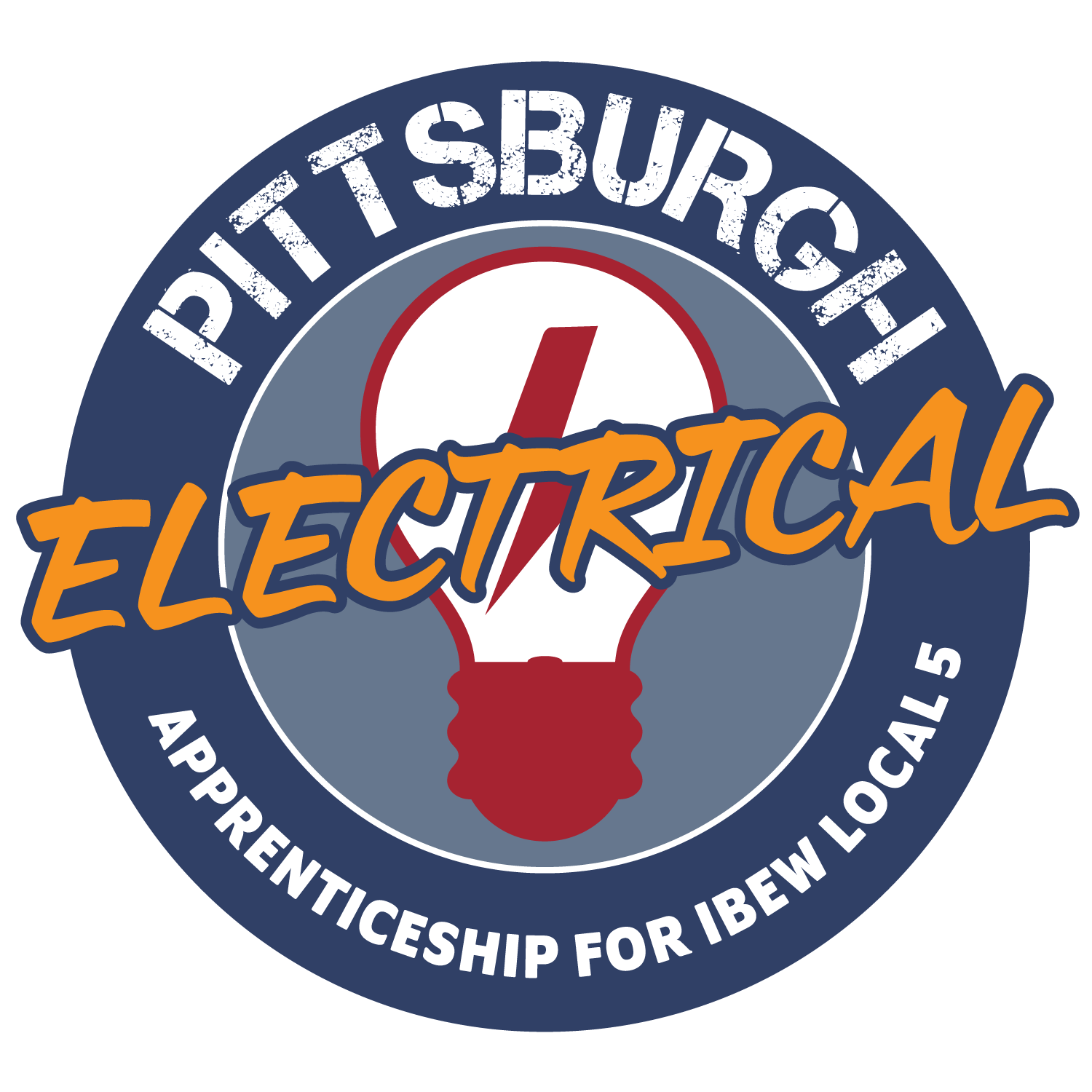The Western Pennsylvania Electrical JATC offers a variety of different courses through the Registered Apprenticeship Program. Apprentices are required to follow a curriculum of courses based on their progress through the program, while improving their skillset on their way to becoming the next generation of Journeymen Electricians. .
Below is course descriptions for all courses offered by the Western Pennsylvania Electrical JATC to the Apprentices in the program:
D.C. Theory, or direct current theory, is one of the fundamental building blocks needed to understand electrical current. In this class, apprentices are introduced to the basics of electricity, show them how to make certain calculations and how to identify series and parallel circuits.
A.C. Theory, or alternating current theory, pertains to the modern form of electricity. In this class, apprentices learn about power generation, the different types of power and power systems.
One of the fundamentals of working in the construction industry is the ability to read and understand blueprints and technical drawings. Every trade and sub-trade has its own symbols and meanings for drawings. Discover how to read and follow blueprints, which electricians use on the job.
- Residential
- Commercial
- Industrial
One of the most valuable skills an electrician can have is to master conduit bending. This course teaches apprentices the calculations and measurements required to bend conduit. It also teaches participants the proper spot to bend the conduit and how to execute multiple types of bends.
The National Electrical Code is an annually updated manual used for electricians on all projects. These codes are used during inspection to ensure that work is completed properly to meet safety and craftsmanship standards.
The National Fire Protection Association has set safety standards to help electricians protect themselves and others from arc-flash and arc-blast exposure.
On a job site, not everything goes as planned and accidents will happen. Learn how to assess situations and act fast in emergencies, which may make the difference between life and death, especially when working with electricity.
Transformers are used to transfer electric current or change electrical values. This course teaches apprentices the theory behind these devices and when these devices are applicable to an electrical system.
Apprentices learn how to properly ground electrical circuits and devices as a safety measure. They also learn when it is appropriate and necessary to bond devices exposed to potential electrical fault.
Heavy materials need to be transported throughout a jobsite. Apprentices learn how to properly rig objects to be moved via crane or other machinery. They also learn how to calculate load weights and how to signal machine operators when working in a loud environment.
This courses teaches apprentices about the installation and inner workings of electric motors. Apprentices learn how to take measurements and test if a motor is running at its maximum ability.
Apprentices learn the installation process and functionality of motors and controllers, as they apply to electrical systems.
This course teaches apprentices the basics of Programmable Logic Controllers, which are mainly used in the manufacturing and robotics industry. These controllers are crucial to the assembly of a product and must be correctly installed in order to meet productivity standards.
Apprentices learn the proper use of instruments to measure electrical parameters and how to calibrate them.
Fiber splicing is the act of joining two fiber optic cables together. This shows electricians how to repair fiber optic cables or combine cables in order to expand the length of the cable.
As technology evolves, construction electricians need to be prepared to deal with new electrical systems. Tele-Data electricians are enlisted to install and wire communication systems. Such systems may include telephone systems, audio systems and fiber optic systems.
- CAT 5 & 6E
- Telephony
- Fiber Optics
Apprentices learn how building automation systems work and when they are applied. These systems may include heating, ventilation, and air conditioning systems or controlled lighting systems.
Infection Control Risk Assessment Awareness training is designed to educate construction workers about procedures needed to be taken when working in occupied areas such as hospitals and office buildings. Procedures could include regulating air-pressure, setting up blockades or cleaning procedures.
The Occupational Safety and Health Administration has a 30-hour course, which is often times required by contractors. In this class, participants learn safety procedures for excavations, materials handling, chemical exposure, scaffolding and more.
Working in petroleum related facilities may require additional training. The Petroleum Educational Council has put together multiple learning programs for workers at these facilities.


